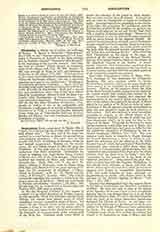

Constantia, a titular see of Arabia and suffragan of Bostra. It figures in Hierocles’ “Synecdemus” about 533, in the “Notitiae episcopatuum” of Anastasius I, Patriarch of Antioch, in the sixth century, and in Georgius Cyprius’ “Descriptio orbis Romani” in the beginning of the seventh century. Two bishops only are known: Chilon, present at Constantinople in 381 (Mansi, Coll. Con., III, 569; Lequien, II, 865, says wrongly at Nicaea in 325), and Solemus at Chalcedon in 451 (Mansi, VII, 168). Eubel mentions
(I, 211) three Latin bishops of Constantia in Phoenicia during the fourteenth century; this city is otherwise unknown and may be our Arabian see. Waddington (Inscriptions grecques et latines … Syrie, 575) has identified with much likelihood Constantia with Bra, north of Ledja, in Trachonitis. Brak had a special era, and inscriptions prove that it had been embellished by Constantine, whence it took its name Constantia (also Constantine, or Constantiana). The ruins are rather important. There have recently settled on this site some Circassian immigrants. Constantia in Arabia is not to be confounded with Constantia, a suffragan see of Amida in Mesopotamia; Constantia, or Tella, a renowned Jacobite bishopric whose ruins are at Viran-Shehir, half-way between Mardin and Edessa; nor with Constantia, or Salamis, metropolis of Cyprus.
S. VAILHE

